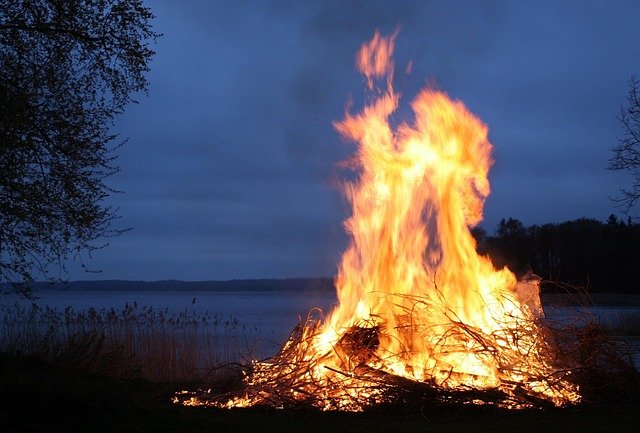Fire is one of the first things humans ever learned to control. It cooks our food, keeps us warm, lights up the dark, and even powers engines. But what really is fire? Why does it move the way it does, like it’s dancing? And why do some things catch fire easily while others don’t?
At first glance, fire looks like magic. But behind every flame, there’s science—and once you understand it, fire becomes less of a mystery and more of a wonder.
In this article, we’ll explore how things burn, why flames behave the way they do, and what makes fire both helpful and dangerous. It’s a topic that lights up young minds—and once you learn it the Debsie way, you’ll never look at a candle or a campfire the same way again.
What Is Fire, Really?
Most people think fire is a thing you can touch. But fire isn’t a solid, liquid, or even a typical gas. Fire is actually a reaction—a chemical reaction that happens when something burns. Scientists call this reaction combustion.
Combustion happens when three things come together: fuel, heat, and oxygen. This is sometimes called the fire triangle. Take away just one of these three, and the fire will stop.
- Fuel is what burns, like wood, paper, or gas.
- Heat is what gets it started, like a match or spark.
- Oxygen is in the air all around us. Without it, flames cannot survive.
When all three are present, a reaction begins. The fuel combines with oxygen and releases energy. That energy shows up as light and heat—and that’s what we see and feel as fire.
Why Flames Glow and Dance
Now that you know fire is energy, let’s look at why flames seem alive. When something burns, tiny particles break away from the fuel and rise into the air. These hot gases glow, which is why you see flames.
But flames don’t stay still. They flicker and dance because the hot air is rising quickly, mixing with cooler air around it. This movement makes the flame look like it’s swaying, twisting, and moving almost like it has a mind of its own.
If you’ve ever watched a candle flame in a room with a fan, you’ll notice it leans or bends in the wind. That’s because air currents push the flame. Fire is always moving, always searching for more oxygen to keep itself alive.
How Fire Begins
Every fire has a starting point. It might be a single spark from a match, the strike of lightning, or heat from the sun focusing through glass. No matter how it begins, the same rule applies: fuel + heat + oxygen = fire.
Imagine lighting a match. When you strike it, friction creates heat. That heat makes the chemicals on the match head break apart, and they react with oxygen in the air. Suddenly, the flame appears. Once the wood of the matchstick catches, it becomes the new fuel that keeps the fire alive.
It’s like a chain reaction. The fire creates heat, the heat lights more fuel, and the cycle continues—until either the fuel runs out or the oxygen is cut off.
How Fire Spreads
A small fire can grow into a large one quickly because fire doesn’t stay in one place. It spreads in three main ways:
- Through direct contact – When flames touch something else that can burn, they pass on their heat. A burning log can light another log beside it.
- Through hot air – Heat rises, carrying flames upward. That’s why fires often climb walls or trees. If you’ve seen a forest fire, you know how quickly it can race upward through branches.
- Through sparks or embers – Tiny glowing pieces can fly away and start new fires. That’s why campfires need careful watching. Even a small breeze can carry embers to dry leaves nearby.
The spreading power of fire is what makes it so useful—but also so dangerous.
Why Some Things Burn Faster Than Others
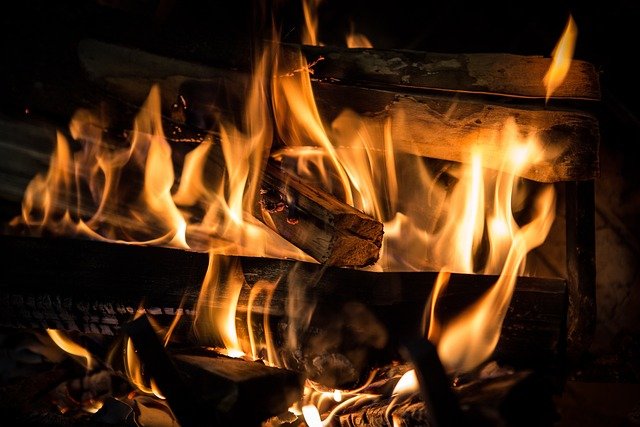
Not everything catches fire the same way. Paper burns almost instantly, while metal hardly burns at all. The reason lies in the chemical makeup of the material.
- Paper and wood have lots of carbon and hydrogen, which combine with oxygen easily. That’s why they burn so quickly.
- Plastics can also burn, but sometimes they melt first, dripping like a liquid before turning into gas.
- Metals are harder to burn, but some (like magnesium) will flare up very brightly once they get hot enough.
This is why fire behaves differently in a kitchen, a forest, or a factory. Understanding how different materials react to fire helps scientists design safer homes, stronger cars, and better fire protection.
Fire’s Helpful Side
It’s easy to think of fire as only dangerous, but without fire, human history would look very different. Early humans learned to cook food with fire, making it easier to eat and safer to digest. Fire also gave warmth in cold climates and kept animals away at night.
Even today, fire powers many things. Engines run by burning fuel. Factories use fire for smelting metals. Farmers use controlled fires to refresh soil. And in homes, stoves and ovens help families in cooking food.
So fire is not just destruction—it’s also creation. The challenge is learning to respect and control it.
What Happens Inside a Flame
When you look at a flame, you’re not just seeing light—you’re watching chemistry happen in real time. Inside a flame, fuel and oxygen are combining quickly, and that reaction is giving off heat and glowing gases.
A flame actually has different zones, even if you don’t notice them at first. At the very bottom, near the wick of a candle or the wood in a fire, is the area where fuel is turning into gas. That part is not as hot. A little higher, where there’s more oxygen mixing in, the reaction is stronger. This is the bright part of the flame you can see. At the very top, the gases are escaping and glowing faintly before fading into the air.
So, the flame is not just one thing—it’s a layered reaction, happening second by second. That’s why it flickers, bends, and even changes shape as air moves around it.
Why Flames Dance
If you’ve ever stared at a candle, you’ve seen the flame sway like it’s dancing. This isn’t just for show. It happens because the hot air from the flame is rising quickly, and cooler air is rushing in to take its place. This constant push and pull makes the flame move in wavy, almost graceful patterns.
In open air, flames move more wildly because breezes and tiny air currents push them around. In still air, the flame looks steadier, but even then, you’ll see small flickers. That’s the natural movement of gases, always shifting and searching for more oxygen to feed the reaction.
Fun fact: in space, flames don’t look the same. Since there’s no “up” or “down” in zero gravity, a flame forms a small round ball instead of stretching upward. Astronauts have studied fire in space to better understand how it behaves without gravity pulling hot air up.
The Heat of Fire
We know fire is hot, but did you know that different parts of the flame have different temperatures? The blue part of the flame, like you see on a gas stove, is the hottest. That’s because the gas there is burning more completely, with plenty of oxygen. The yellow or orange part of a candle flame is cooler, because it has tiny bits of glowing carbon floating inside.
This difference in heat is why cooks prefer gas stoves for precise cooking. That steady blue flame gives even, high heat, while a campfire’s yellow flames are less predictable. Firefighters also study flame temperatures to know how fast a fire might spread and how dangerous it could become.
Fire and Smoke
Where there’s fire, there’s usually smoke. But what is smoke, really? Smoke is made of tiny solid particles and liquid droplets that couldn’t burn completely. That’s why smoke looks gray or black—it’s filled with bits of carbon and other materials.
Smoke is a sign that the fire doesn’t have enough oxygen, or that the fuel isn’t burning cleanly. A clean-burning flame, like the blue flame on your stove, produces little or no smoke. But a smoky campfire means not all the fuel is being used up.
Smoke itself can be harmful because those tiny particles can enter your lungs. That’s why firefighters wear special masks and why chimneys and vents are so important in homes.
The Life of a Fire
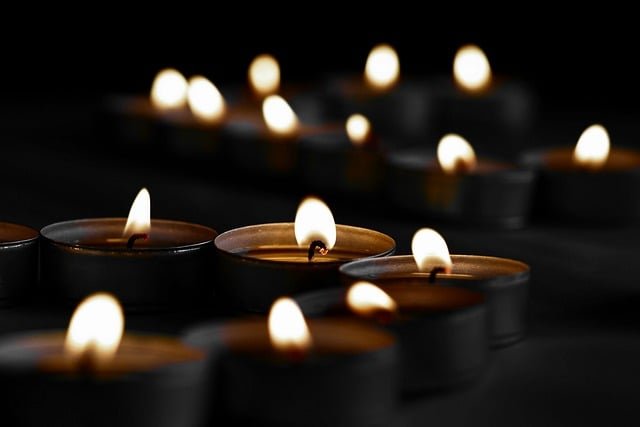
Fire isn’t just a moment—it has a whole life story. From the instant a spark is born to the time the last smoke fades away, every fire goes through clear stages. Understanding this cycle helps us appreciate its power and also teaches us how to control it.
Ignition – The Spark of Beginning
Every fire starts with ignition. This is when fuel, heat, and oxygen come together in just the right way. Think about striking a match. The friction from your hand creates heat. That heat lights the chemicals on the tip, and suddenly the wood catches fire. That small flame is the ignition stage.
At this point, the fire is weak. If the match is blown out or the fuel is taken away, it won’t survive. It’s like a newborn—delicate and easily stopped. But if the fire finds enough fuel and oxygen, it grows stronger and begins its journey.
Growth – From Small Flame to Spreading Fire
Once the flame takes hold, the growth stage begins. The fire uses its own heat to light more of the nearby fuel. A small campfire that starts with twigs and paper begins to spread to bigger logs. In a house fire, flames might climb from furniture to curtains.
This stage is dangerous because the fire is no longer easy to stop. Heat rises quickly, pulling in more oxygen from the air, which makes the flames grow even faster. What started as a spark is now alive and spreading.
Fully Developed – Fire at Its Fiercest
At this stage, the fire is at full strength. It has plenty of fuel, lots of oxygen, and is producing enormous heat. Flames may roar, crackle, and spread with speed. Thick smoke rises, and the fire feeds itself without help.
This is the point where a fire becomes most dangerous. In buildings, temperatures can climb so high that even steel weakens. In forests, flames can leap from treetop to treetop in seconds. Once fire reaches this stage, only trained firefighters and strong safety measures can bring it under control.
Decay – The Fire Weakens
Every fire, no matter how strong, must eventually come to an end. This final stage is called decay. The flames shrink as the fuel runs out. The heat lowers, the light dims, and the smoke thins. What’s left might be glowing embers, ash, or the blackened remains of what once burned.
But don’t be fooled—this stage can still be risky. Sometimes those glowing embers can re-ignite if they touch fresh fuel. That’s why firefighters always watch carefully and make sure every spark is completely out.
Fire’s Story
So, the life of a fire begins with a spark, grows with fuel, rages with power, and ends with silence. It’s a cycle as old as humanity itself. By knowing each stage, we don’t just understand fire—we learn how to use it wisely and stay safe around it.
How We Control Fire
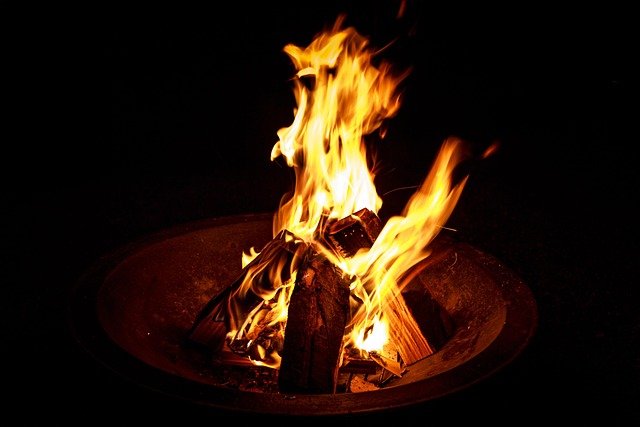
Fire is a powerful friend but also a dangerous enemy. Since the beginning of time, humans have been learning not just how to start fire, but also how to stop it. Controlling fire means understanding what it needs to survive—fuel, heat, and oxygen. This is called the fire triangle. If you take away even one side of this triangle, the fire can no longer live. Let’s look at how this works in real life.
Cooling the Fire
The most common way to stop a fire is to cool it down. That’s why water is often the first thing people think of. When you pour water on flames, it soaks up the heat. The fire no longer has enough energy to keep burning, and the flames die.
This works especially well with wood, paper, or cloth fires. But water doesn’t always work. In fact, if you throw water on a burning pan of oil, it can make things worse. The water sinks below the hot oil, turns instantly into steam, and blasts the oil into the air—spreading the fire. That’s why kitchens often need a different method, like fire blankets or special extinguishers.
Smothering the Flames
Another way to stop fire is by taking away oxygen. Fire breathes oxygen from the air, just like we do. If you cover it up so it can’t “breathe,” it will suffocate.
Imagine putting a lid over a burning pot. The fire inside quickly goes out because no more air can reach it. Firefighters use foam or fire blankets to smother flames the same way. Even sand can be poured on a small fire to block oxygen.
This method is quick and effective, especially for smaller, contained fires.
Starving the Fire
The third method is removing the fuel. If fire has nothing left to eat, it will weaken and die. This is why firefighters sometimes create firebreaks during forest fires. They cut down a line of trees or clear away brush so the fire has nothing left to burn when it reaches that spot.
At home, starving the fire might be as simple as turning off the gas on a stove or moving flammable materials away from the flames. Without fuel, the fire cannot continue its life cycle.
Modern Firefighting
Today, firefighters use all three methods—cooling, smothering, and starving—depending on the situation. They also use special tools like fire hoses, foam sprays, extinguishers, and protective suits. Technology has made firefighting safer, but at its heart, it’s still about breaking the fire triangle.
Fire Under Control
The real lesson is this: fire is not unstoppable. Once you know how it works, you can take away what it needs and bring it under control. Cooling, smothering, and starving are not just firefighting tricks—they are the science of safety. And understanding this science could one day save your life.
Why Fire Safety Matters
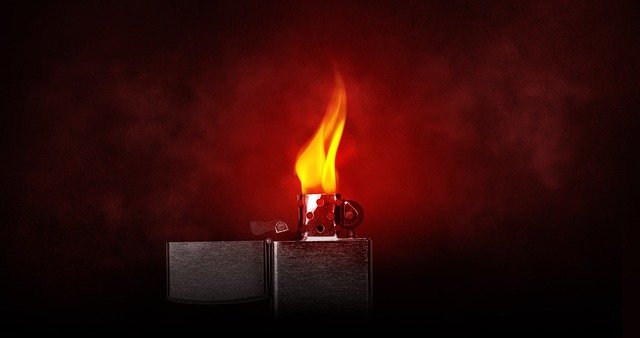
Fire is one of the most useful discoveries in human history, but it’s also one of the most dangerous. A single small flame, if left unchecked, can grow into something powerful enough to destroy homes, forests, and lives. That’s why fire safety is not just important—it’s essential.
The Double Nature of Fire
Think about fire like a sharp tool. In the right hands, it helps us cook, stay warm, and light up the night. But if it’s not handled carefully, it can cut deeply and cause harm. Children sometimes see fire as fascinating or even playful. The truth is, it is fascinating—but it must always be treated with respect.
Learning the rules of fire safety from an early age is what makes the difference between fire being a helpful tool and fire becoming a disaster.
Small Flames Can Become Big Fires
Most large fires don’t start big. They often begin with something tiny: a candle left unattended, a spark from faulty wires, or a pan of oil on the stove. But fire doesn’t stay small for long. Within minutes, it can spread across a room or leap from tree to tree outdoors.
That’s why simple actions—like blowing out candles before bed, turning off stoves when not in use, and keeping matches out of children’s reach—are so powerful. They stop accidents before they start.
Safety at Home and Beyond
Fire safety isn’t only for firefighters. It starts in every home. Families can practice what to do if a fire breaks out—knowing the fastest way outside, staying low to avoid smoke, and never going back for belongings.
In schools, fire drills are common for the same reason. They train children to act quickly and calmly, so if a real fire ever happens, fear doesn’t take over. Even adults in workplaces practice safety routines, because fire doesn’t choose its place or time.
Respect, Not Fear
It’s important to remember: fire safety is not about being afraid of fire—it’s about respecting fire. When you respect it, you keep it under control. When you respect it, you protect yourself and others.
Teaching children to see fire as powerful but manageable gives them confidence. They learn that fire isn’t just danger—it’s energy that can be guided, controlled, and used for good. And that respect is what keeps families, schools, and communities safe.
The Colors of Fire and What They Mean
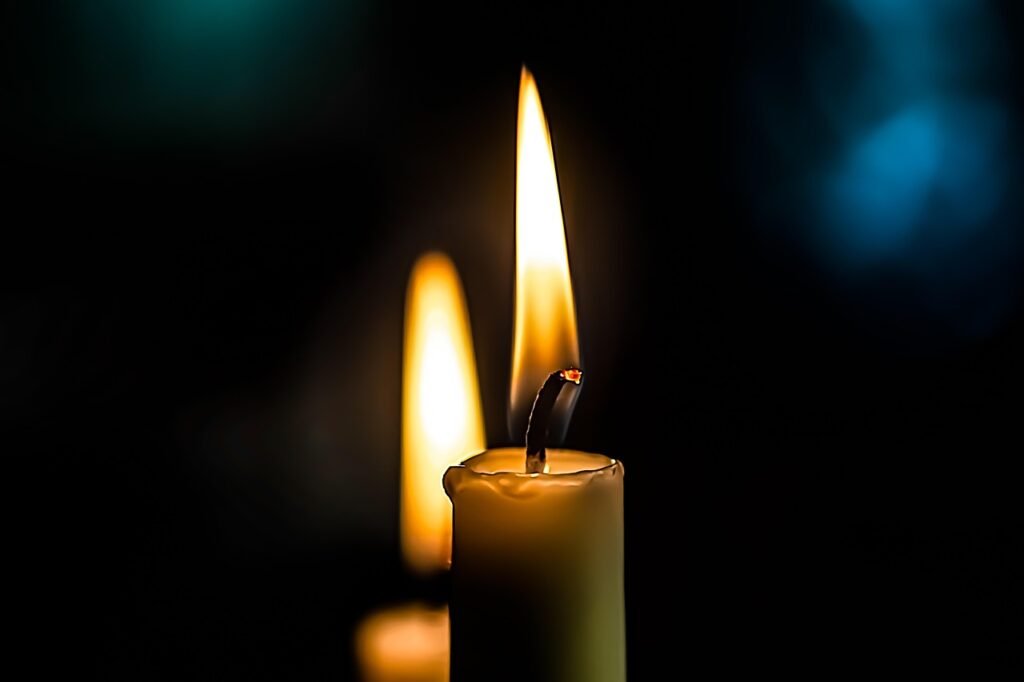
When you look closely at a flame, you’ll notice it isn’t always the same color. Sometimes it’s yellow or orange, other times blue, and occasionally even white. These colors aren’t random—they tell us something important about the temperature of the fire and the fuel that’s burning.
Yellow and Orange Flames – The Common Fire
Most people imagine fire as yellow or orange, like a candle flame or a campfire. These flames are warm but not the hottest. The color comes from tiny glowing particles of carbon, called soot, that shine as they’re heated up.
That’s why when you toast a marshmallow over a campfire, you see the golden-yellow glow. It’s a sign of incomplete burning—meaning not all the fuel is mixing perfectly with oxygen. These flames are beautiful, but they often produce smoke.
Blue Flames – The Hot and Clean Burn
If you’ve ever cooked on a gas stove, you’ve seen a steady blue flame. This flame is hotter than yellow or orange flames. It burns cleaner, with less smoke, because the fuel (usually natural gas) is mixing evenly with oxygen.
A blue flame shows efficiency. It means the fire is using its fuel well, with little waste. That’s why gas stoves, Bunsen burners in science labs, and jet engines all rely on blue flames. They’re hotter, steadier, and better for precise control.
White Flames – The Extreme Heat
The rarest flames are white. A white flame means the fire is burning at an extremely high temperature. In some cases, metals like magnesium burn so hot they glow white. These flames are almost blinding to look at because of their intensity.
While you won’t see white flames in your kitchen or fireplace, welders and metalworkers often encounter them. They use this extreme heat to cut through steel and shape materials that ordinary flames could never touch.
Colors Beyond the Basics
Sometimes flames can even appear green, purple, or red. This usually happens when certain chemicals or metals are burning. For example, copper can make flames green, while lithium can give off a red glow. Fireworks use these chemical tricks to create dazzling colors in the sky.
So, the next time you light a candle, cook dinner, or watch fireworks, remember—those colors are not just pretty. They’re a signal from the fire itself, telling you how hot it is and what’s burning inside.
How Debsie Helps Kids Understand Fire and Science

At Debsie, we believe every child should feel the wonder of science, not the fear of it. When children learn about fire with us, they don’t just memorize words like “combustion” or “oxygen.” They see, feel, and understand how fire really works. We take something that might seem dangerous or confusing and turn it into a lesson that is simple, safe, and fascinating.
From Curiosity to Understanding
Children are naturally curious about fire. They see candles at home, fireworks in the sky, or sparks from a lighter, and they want to know, “Why does it do that?” At Debsie, we nurture that curiosity. Our expert teachers break fire down into the simplest parts—fuel, heat, and oxygen—explaining in ways that make sense for each age. A 7-year-old might learn about fire through fun experiments, while a 15-year-old might explore chemical reactions and energy transfer in depth.
By meeting children exactly where they are, we help them build real understanding step by step.
Learning That Feels Alive
Our lessons don’t stop at words on a screen. We bring science alive with interactive experiments, engaging visuals, and live teacher support. For example, when teaching fire, kids might watch safe demonstrations, simulate how flames move in different conditions, or even try small home experiments (with adult supervision). Instead of just reading about why flames dance, they actually see how air currents affect a candle’s flicker.
This kind of learning makes science unforgettable, because it becomes something children can experience—not just something they have to memorize.
Growing Smarter, Safer, and More Confident
The best part? At Debsie, children don’t just learn the science of fire—they also learn life lessons. They understand why fire safety matters, why rules exist, and how respecting fire keeps families safe. That knowledge builds confidence and responsibility, which are just as important as academic skills.
And because Debsie teaches every subject, from science to math to history, children start making connections between what they learn in one area and how it applies in another. Fire is no longer just fire—it becomes part of a bigger story about energy, chemistry, history, and even human survival.
Final Thoughts: Fire, Science, and the Wonder of Learning
Fire is more than a flame. It is energy, motion, and transformation. It cooks our food, lights our nights, powers our engines, and shapes our world. But as powerful as it is, fire also teaches us a simple truth: knowledge is what makes the difference between danger and discovery. When we understand how fire starts, grows, and dances, we not only respect it—we learn to use it wisely.
At Debsie, that’s what we believe science learning should be: not just memorizing facts, but truly understanding how the world works. We take the mystery of things like fire and turn them into simple, joyful lessons that stick. Children come away not only smarter in school, but also more confident in life.
If you want your child to feel this same sense of wonder and clarity, Debsie is here to help. Together, we can light the spark of curiosity and let it grow into a lifelong love of learning.
👉 Book a free trial science class today
👉 Explore our courses for kids aged 5–18
Because the best fire of all is the one we kindle inside curious young minds.
Read Next:
